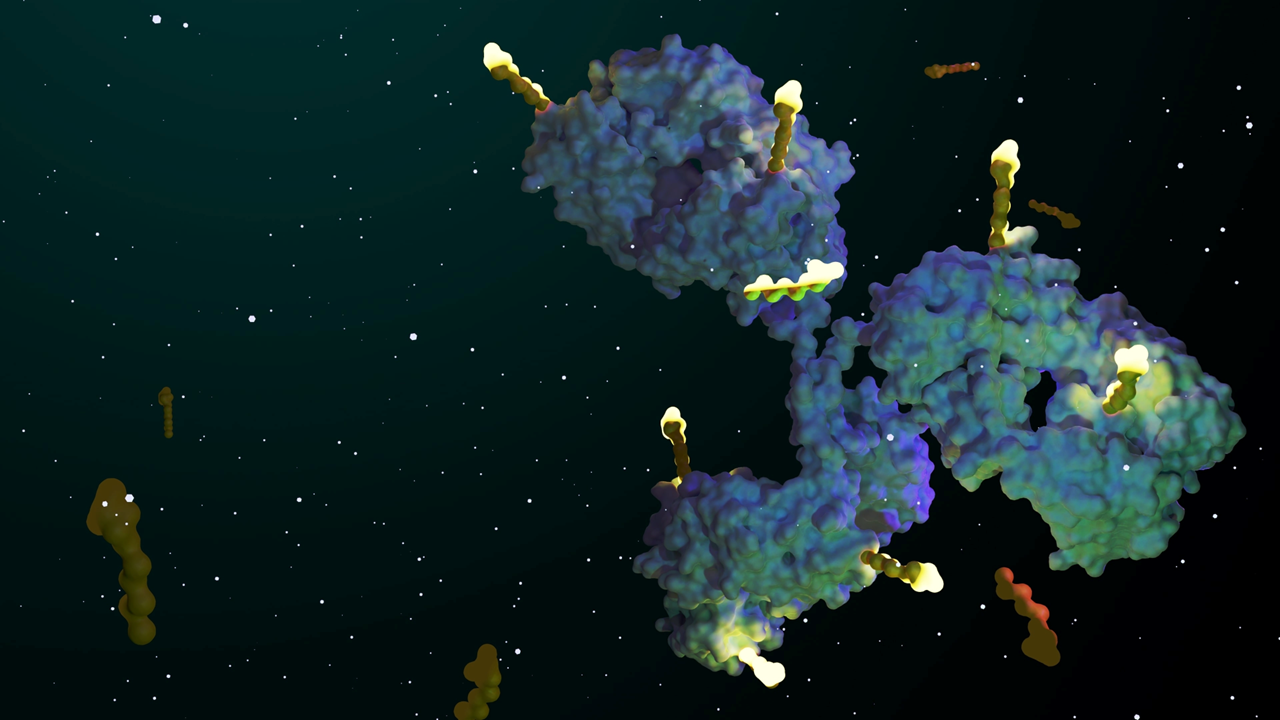Obesity represents one of the most significant public health challenges today. In the US, recent data from the CDC indicate that 42% of adults 20 and older meet the clinical criteria for obesity, while nearly 20% of children are affected. Globally, obesity rates have nearly tripled since 1975, with an estimated 650 million adults classified as obese.
These figures underscore the urgent need for treatments that not only promote weight loss but also address the complex metabolic disruptions accompanying obesity.
Global projections indicate that the market for anti-obesity medications is set to surge dramatically — from $12.8 billion in 2024 to approximately $104.9 billion by 2035 — translating to a compound annual growth rate (CAGR) of 21.1%. This is driven by increasing clinical demands and the limitations of current therapies.

President & CEO
Skye Bioscience
Although traditional drugs like GLP-1 receptor agonists have provided significant benefits, they often fall short in addressing the full spectrum of metabolic dysfunctions and can be associated with notable side effects.
Skye Bioscience is on a mission to address these unmet needs by harnessing the potential of the endocannabinoid system to treat metabolic, inflammatory and fibrotic processes linked to obesity.
Recently, the company reached a critical milestone by surpassing 50% patient enrollment in its Phase II clinical trial for its innovative peripheral CB1 inhibitor, nimacimab. With clinical data expected in 2025, Skye Bioscience’s work aims to offer a scientifically robust and well-tolerated alternative to existing obesity treatments.
In this Xtalks Clinical Edge™ interview, Skye Bioscience’s President and CEO Punit Dhillon shared insights into how targeting peripheral CB1 receptors might reshape our approach to metabolic health and may overcome some limitations of current therapies.
Xtalks Clinical Edge™: Issue 4 — Skye Bioscience’s Approach to Obesity Drug Development
Xtalks Clinical Edge™ is a magazine for clinical research professionals and all who want to be informed about the latest trends and happenings in clinical trials. This magazine immerses you in a world where industry leaders, patient advocates and top researchers converge to provide the most insightful perspectives on clinical trials.
A Novel Scientific Approach
Skye Bioscience’s strategy centers on harnessing peripheral CB1 inhibition to modulate the metabolic processes that drive obesity. Rather than solely suppressing appetite through central nervous system (CNS) pathways — as many current treatments do — this approach specifically targets CB1 receptors in peripheral tissues such as adipose tissue, liver and muscle. By directly influencing fat metabolism and energy expenditure, this method promotes fat breakdown and enhances energy utilization while aiming to avoid the neuropsychiatric side effects often associated with CNS-penetrant drugs.
As Punit explained, “Unlike many current therapies that are primarily focused on appetite suppression, our investigational peripheral CB1 inhibitor acts on peripheral tissues to reduce fat accumulation and also can help in other pathways like improving insulin sensitivity and leptin sensitivity.”
Recent preclinical studies have demonstrated that blocking peripheral CB1 receptors can lead to several beneficial metabolic outcomes:
- Enhanced Lipid Mobilization and Fat Breakdown: In diet-induced obesity (DIO) models, peripheral CB1 inhibition has resulted in dose-dependent weight loss — up to 16% compared to controls — by promoting fat breakdown, reducing fat storage through the inhibition of lipogenic enzymes and stimulating pathways that enhance fatty acid oxidation.
- Improvement in Insulin and Leptin Sensitivity: Modulating peripheral CB1 activity enhances insulin sensitivity and improves leptin signaling. This is crucial, as many obese patients suffer from leptin resistance, which disrupts appetite regulation and energy balance.
- Increased Energy Expenditure: Evidence suggests that peripheral CB1 blockade shifts the body’s energy utilization toward greater fat oxidation independent of caloric intake. This shift contributes to a more favorable body composition by increasing overall energy expenditure.
- Reduced CNS Exposure and Potential Enhanced Safety: A major advantage of this strategy is the limited distribution of the inhibitor to the brain. Pharmacokinetic studies confirm minimal blood-brain barrier penetration, thereby reducing risks of central side effects such as depression or anxiety.
By focusing on these peripheral mechanisms, the approach aims to facilitate meaningful weight loss while addressing related metabolic complications such as dyslipidemia and insulin resistance.
Addressing Patient Heterogeneity
Obesity is a multifaceted condition with patients exhibiting a wide range of clinical profiles and metabolic needs. Dhillon has emphasized that a “one-size-fits-all” approach is insufficient for managing this complex disease. Many individuals — especially those with class I obesity or metabolic complications — may not require dramatic weight loss to achieve significant health improvements. For these patients, preserving lean muscle mass and enhancing metabolic functions (such as improved insulin and leptin sensitivity) can be as critical as reducing fat mass.
Skye Bioscience’s peripheral CB1 inhibition strategy is designed with this heterogeneity in mind. By modulating pathways that affect energy expenditure, fat oxidation and hormone regulation, the company aims to offer a treatment that can be tailored to the unique needs of each patient.
For example, individuals who respond less favorably to therapies primarily focused on appetite suppression may benefit from a regimen that enhances fat breakdown and metabolic health without inducing significant gastrointestinal side effects or muscle loss. This approach acknowledges that some individuals with obesity may achieve optimal outcomes through sustainable improvements in metabolic balance rather than rapid, dramatic weight loss.
Even modest weight loss can lead to significant health benefits for individuals with obesity. For instance, a study supported by the NIH found that losing just 5% of body weight resulted in improvements in metabolic health markers.
Complementary, Not Competing, with Current Therapies
Skye Bioscience’s method is designed to potentially work alongside existing obesity treatments rather than replace them. Current therapies — especially GLP-1 receptor agonists — have shown strong efficacy in reducing appetite and promoting weight loss, yet they come with limitations, such as gastrointestinal side effects and the potential loss of lean muscle mass.
Their investigational peripheral CB1 inhibitor offers a complementary mechanism by directly targeting metabolic processes at the tissue level. It modulates fat metabolism, enhances insulin and leptin sensitivity and boosts energy expenditure through increased fat oxidation. In doing so, it can not only support weight loss but also improve overall metabolic health. This means that while GLP-1 agonists primarily curb appetite through central pathways, the peripheral CB1 inhibitor addresses the underlying metabolic dysregulation often seen in obesity.
Furthermore, the design of this compound facilitates its use in combination therapies. Early clinical programs are already exploring its use alongside GLP-1 receptor agonists, leveraging the appetite-suppressing effects of one and the metabolic benefits of the other. This dual approach may allow physicians to tailor treatments more precisely to a patient’s metabolic profile, potentially enhancing overall efficacy while reducing the required dosage — and hence the side effects — of each individual drug.
Rigorous Clinical Evaluation and Safety
A cornerstone of Skye Bioscience’s strategy is its robust clinical evaluation framework, ensuring that any new treatment not only demonstrates efficacy but also meets the highest safety standards. The multi-phase clinical program rigorously examines both metabolic outcomes and comprehensive safety assessments.
In early-phase studies, extensive safety panels monitor a broad range of parameters. Patients undergo detailed neuropsychiatric and cognitive evaluations to detect any potential central side effects early on. This is particularly important for therapies targeting the endocannabinoid system, given past issues with brain-penetrant agents. Preclinical models and Phase I data have shown minimal central exposure and no significant neuropsychiatric adverse events, setting a promising foundation for patient safety.
Skye Bioscience’s ongoing double-blind, placebo-controlled Phase II trial will enroll 120 patients divided among four treatment groups. The main objective is to compare weight loss outcomes between patients receiving the investigational therapy and those given a placebo. In addition, one exploratory aim is to evaluate the effects of combining the investigational peripheral CB1 inhibitor with Wegovy (semaglutide) versus administering a placebo alongside Wegovy. Secondary and other exploratory endpoints include assessments of safety and tolerability; neuropsychiatric and cognitive outcomes; changes in body composition measured by dual-energy X-ray absorptiometry (DEXA); various metabolic parameters; and improvements in sleep quality.
Looking Ahead in Obesity and Metabolic Health
Looking forward, the future of obesity and metabolic health treatment is promising as emerging data continue to shape our understanding of this complex disease. Skye Bioscience aims to contribute to this evolving field by expanding its clinical pipeline and refining its peripheral CB1 inhibition approach.
Recent strategic milestones — including achieving over 50% patient enrollment in its Phase II trial and the anticipated clinical data — highlight a robust development plan that promises not only substantial weight loss but also improvements in critical metabolic parameters such as insulin sensitivity and lipid profiles.
As the obesity market becomes increasingly heterogeneous, future treatment strategies are likely to embrace combination therapies. Integrating agents that target distinct yet complementary pathways — such as pairing the investigational peripheral CB1 inhibitor with GLP-1 receptor agonists — could enable more personalized treatments. This multidimensional approach may enhance efficacy, improve patient adherence and minimize adverse effects, ultimately addressing both weight reduction and the broader spectrum of metabolic syndrome challenges.
Advances in pharmacogenomics and personalized medicine are expected to further refine these strategies, allowing clinicians to match treatments to individual genetic and metabolic profiles. Ongoing and future studies will continue to assess long-term safety, durability of response and overall quality of life improvements, ensuring that these innovative therapies provide sustainable benefits over time. This forward-thinking vision aims to transform obesity treatment from a single-target intervention into a comprehensive, multi-faceted therapeutic approach.













Join or login to leave a comment
JOIN LOGIN